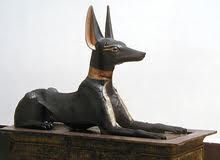 a summer of symbolism continues…
a summer of symbolism continues…
As you noticed in the previous Wild & Tame blog, the symbolism of animals varies with culture–and often changes over centuries. And yet some have stood the test of time.
Note: This is a down and dirty animal symbolism list—-blog-sized. If you’re reading or writing about a particular animal additional research is suggested.
Animal Symbolism: F-J
Fox: “Crafty like a fox.” No doubt the saying comes from the fox’s symbolic heritage. Sneaky, crafty, sly, treacherous–another Trickster figure. In both Native American and eastern cultures, the fox is a shape-shifter. In Japanese folklore, Kitsune can be either good or bad ( I go into a bit more detail in The Merkabah Recruit)
Gazelle: The fleet of foot creature is symbolic of grace, goodwill, and swiftness.
Goat: The beast symbolizes fertility and lust—that’s where we get the saying “horny old goat.” The goat is also associated with Bacchus (party sex god), Pan, and Zeus. In art, devils or demons are often depicted with hooves and/or horns. But the goat has some positive aspects too–determination and nimbleness (climbing rocky mountains is difficult).
Hare: A trickster figure ( of The Tortoise and the Hare fame). The hare is also a symbol of fertility ( as my daughter might say “you think?”). Once a manifestation of the Buddha.
Hedgehog: Early Christians deemed the furry roll-up-in-ball critter evil. Irish lore contends that witches changed into a hedgehog so they could drink milk from cows. Native Americans saw the critter as a symbol for self-preservation.
Hippopotamus: To ancient Egyptians, the hippo was a symbol of rebirth and renewal.  Tawaret, goddess of childbirth, was depicted as a pregnant hippo (well, if that ain’t the perfect metaphor).
Tawaret, goddess of childbirth, was depicted as a pregnant hippo (well, if that ain’t the perfect metaphor).
Horse: Beauty, speed, nobility, freedom–the horse is associated with the sun and sky gods. The color of the horse is also symbolic. White horses are symbols of spiritual rebirth ( Knight on White Horse). The winged-horse Pegasus is connected to the sun and represents spiritual aspects.
Hyena: Eater of dead flesh, scavenger–and, no doubt, with its weird laugh/bark—the hyena is associated with uncleanliness, avarice, and cowardice. It was once thought that the hyena could change sexes and so it became a symbol for sexual abnormality.
 Jackal: The desert scavenger is symbolic of evil and destruction in India. The regal-looking creature, however, was worshiped as the god Anubis in Egypt. In the Bible, the jackal is associated with desolation.
Jackal: The desert scavenger is symbolic of evil and destruction in India. The regal-looking creature, however, was worshiped as the god Anubis in Egypt. In the Bible, the jackal is associated with desolation.
Coming soon! Animal symbolism K-Z
I teach literary analysis ( must pay the bills) and remind my students to look closely at the symbolism in a novel. Why did the author include that fruit? Or name the character Neil? Why is the protagonist sitting under a pear tree? Why is her dress blue? Before jumping to any symbolic conclusions however, we look at the symbol in context of setting, history, and culture.
For more information on literary analysis click On Writing/For Teachers/ to see Elements of a novel. The Art of Fiction, and How to Read Like a Literature Professor.
Related Links: Bugs; Fruit of the Gods; Tree of Life; Sacred Spices; Foods of Life; Birds of a Feather #1; Birds of a Feather #2; Gems & Jewels #1; Gems & Jewels #2; Lucky Charms; Demonic Animals; Wild & Tame;














